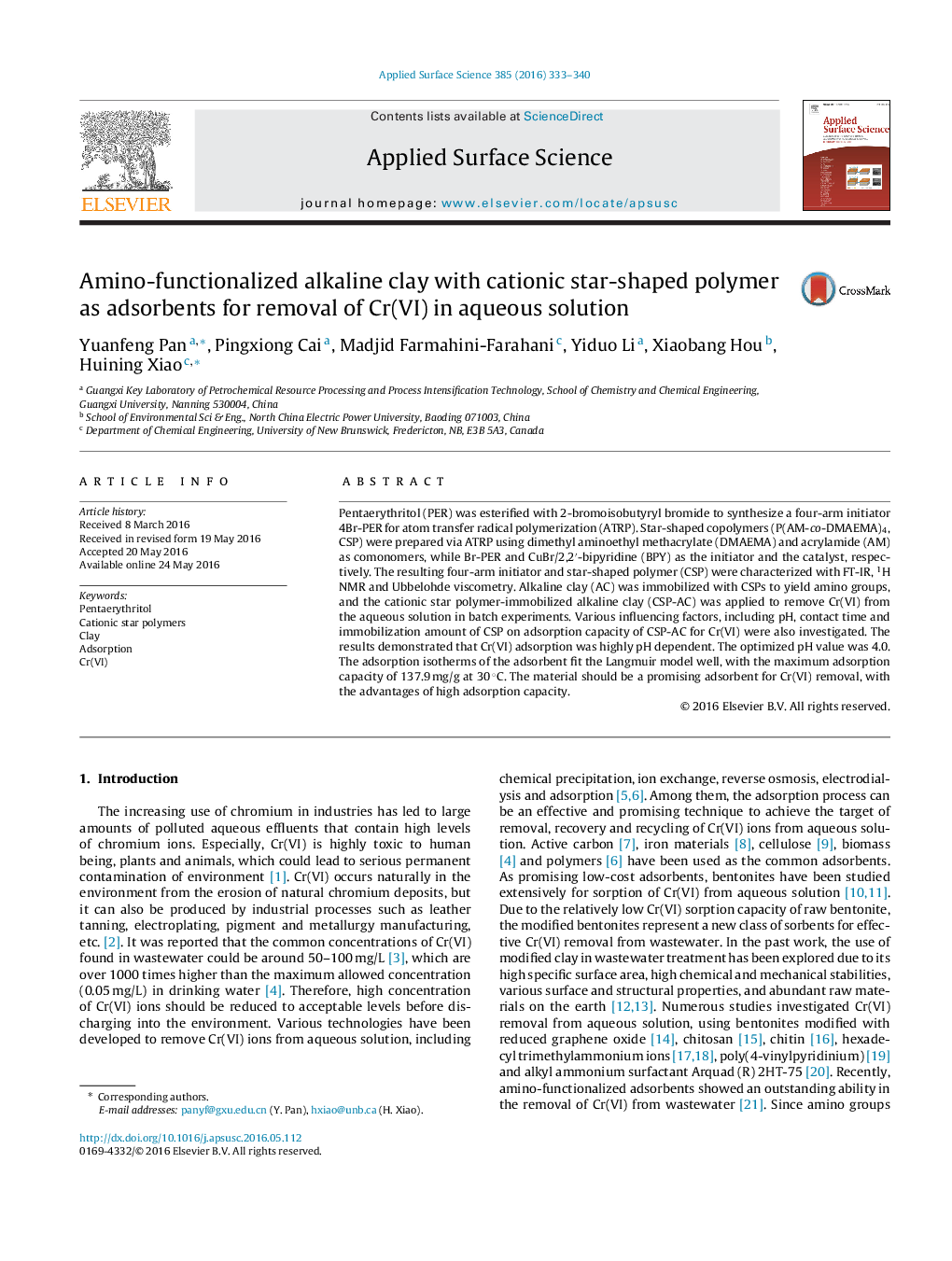| Article ID | Journal | Published Year | Pages | File Type |
|---|---|---|---|---|
| 5351949 | Applied Surface Science | 2016 | 8 Pages |
Abstract
Pentaerythritol (PER) was esterified with 2-bromoisobutyryl bromide to synthesize a four-arm initiator 4Br-PER for atom transfer radical polymerization (ATRP). Star-shaped copolymers (P(AM-co-DMAEMA)4, CSP) were prepared via ATRP using dimethyl aminoethyl methacrylate (DMAEMA) and acrylamide (AM) as comonomers, while Br-PER and CuBr/2,2â²-bipyridine (BPY) as the initiator and the catalyst, respectively. The resulting four-arm initiator and star-shaped polymer (CSP) were characterized with FT-IR, 1H NMR and Ubbelohde viscometry. Alkaline clay (AC) was immobilized with CSPs to yield amino groups, and the cationic star polymer-immobilized alkaline clay (CSP-AC) was applied to remove Cr(VI) from the aqueous solution in batch experiments. Various influencing factors, including pH, contact time and immobilization amount of CSP on adsorption capacity of CSP-AC for Cr(VI) were also investigated. The results demonstrated that Cr(VI) adsorption was highly pH dependent. The optimized pH value was 4.0. The adsorption isotherms of the adsorbent fit the Langmuir model well, with the maximum adsorption capacity of 137.9 mg/g at 30 °C. The material should be a promising adsorbent for Cr(VI) removal, with the advantages of high adsorption capacity.
Keywords
Related Topics
Physical Sciences and Engineering
Chemistry
Physical and Theoretical Chemistry
Authors
Yuanfeng Pan, Pingxiong Cai, Madjid Farmahini-Farahani, Yiduo Li, Xiaobang Hou, Huining Xiao,
